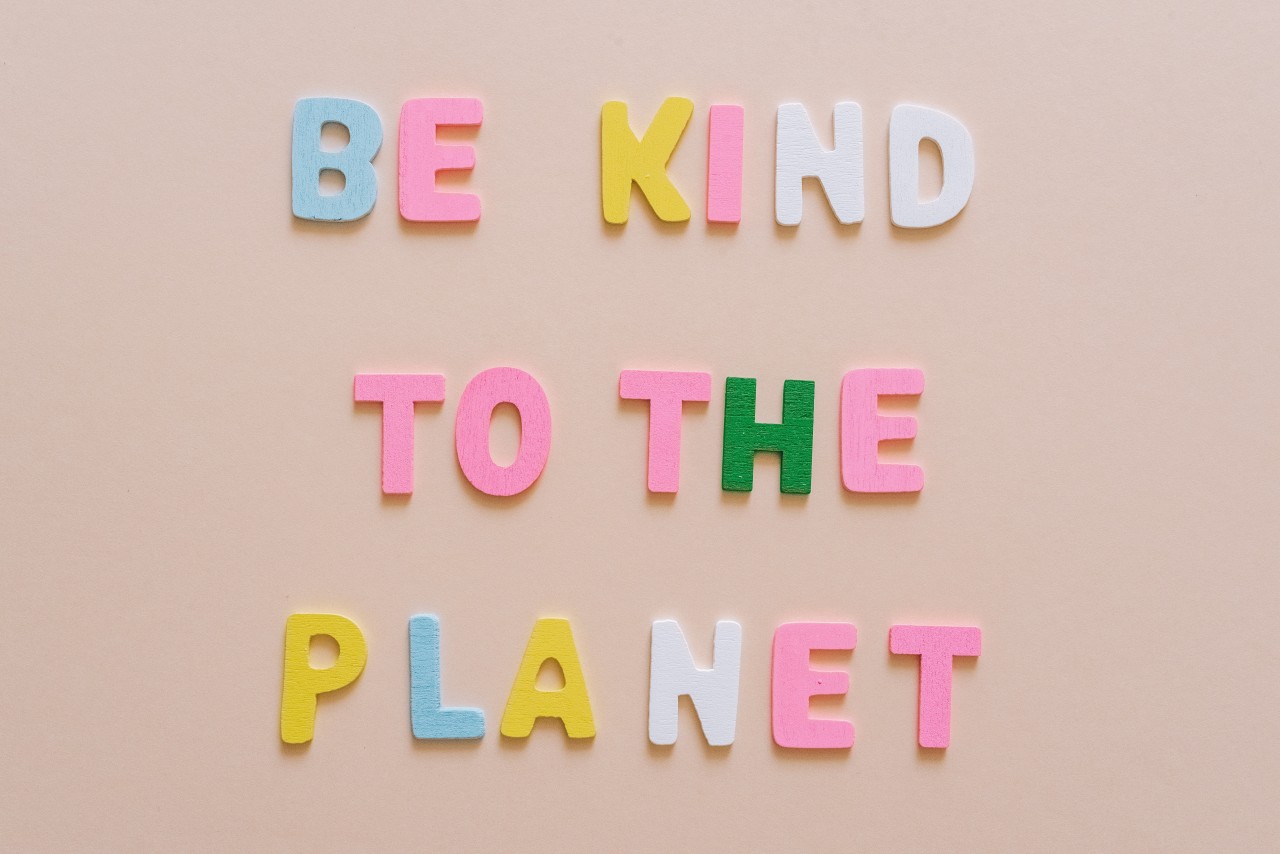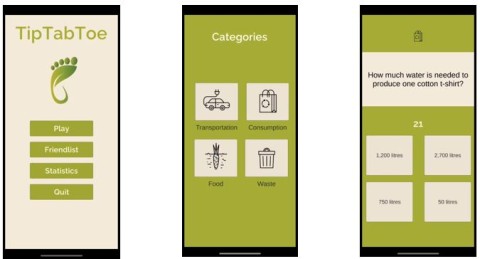TipTabToe – An App against Climate Change
DTLab Challenge with Karmacom GmbH

Overview
This challenge was carried out by IT and business students of HM and TAMK (Tampere) in cooperation with Karmacom GmbH, an agency for CSR related topics and sustainable communication. With this challenge, Karmacom wanted to expand their focus to the B2C market with the idea of a non-profit app to encourage especially young people to think about a more ecological future.
Problem
Facing the climate crisis is usually accompanied by threatening scenarios that make people feel powerless and therefore quickly take their motivation to try to do something against them. This happens, even though human interaction and behaviour changes are the keys to protect the earth from further overheating. Moreover, it is considered a very abstract topic. The effects can already be felt, but politicians often talk about goals and measures in a way that is difficult to understand without scientific background knowledge. In addition, hearing that certain threatening events are usually to be expected a decade or two in the future, many people do not want to think about what could be changed now.
Furthermore, there is so much new information on climate change published each day, that many people ask themselves: Which information is fake and which is legitimate? The idea that the team of students was supposed to implement to address these problems was a multiplayer quiz called “TipTabToe” that operates on giving positive and non-judging impulses to its users on what they could personally do against climate change. The vision of “TipTabToe” is to guide people to a climate-friendly lifestyle in a playful and motivating way.
Approach
The team TipTabToe ("the 4T") used the “CIL Solution Delivery Approach”, which combines design thinking and agile solution development, as well as Working Backwards, the design thinking approach by Amazon, and the SCRUM® Methodology to work on their final product. Before the 4T started working on the Innovation Approach, they had to analyse the client Karmacom. They did this with the help of a stakeholder analysis that helped them to better understand the solution that they were expected to deliver.
With the “5 Working Backwards Questions”, the team did further research on their customer group and documented all the important facts about it. This strengthened them in their choice, since they found out that Generation Z, containing people aged 16-25, was very interested in topics like sustainability, health, and well-being and that an app would be the perfect product to catch its attention since it consisted of digital natives only.
From this information, an empathy map was created and students used the creative tool "Crazy 8" under the guidance of the AWS coaches to develop further approaches to support the basic idea of a multiplayer quiz app. The result of this was that the app should have a community aspect, which would make it possible to exchange tips and tricks with community participants. Challenges should also be included. Here, the competitive approach in the game was further supported.
Another idea was to involve the players in the creation of questions. This meant implementing a function that would allow them to share their own ideas and interesting topics and thus help shape the content of the app in a user-oriented way.
In addition, the students had the idea of linking the online game world with the offline world. Since the goal of the app is to steer the user's behaviour in a sustainable direction, they decided that the reward for reaching game levels should be coupons or points that could be redeemed, for example, at a nearby unpackaged store. This way, alternative actions to common behaviour could be recommended directly to the player and the awareness of sustainable retailers could be increased.
The next step was to visualize the problem and the user's journey to the solution. For this visualization, the students chose to create a storyboard. To announce the app, the 4T wrote a fictitious press release.To deliver the app, the students used the SCRUM® methodology. They divided into a SCRUM® master, a product owner (PO) and the development team. The development team consisted of three information technology (IT) specialists and four business specialists. They then went through five so-called “sprints”.
Because of the limited number of sprints, the development of a multiplayer quiz app was not possible. The product owner discussed this information with the client and found a solution. Furthermore, the 4T asked for specified requirements. These requirements allowed the team to prioritize the user stories. By the end of sprint four, the team was able to deliver six user stories and two business specialists, who were responsible for creating the sustainable question for the questionnaire, got the approval by the client. Within the last and fifth sprint, the team was able to deliver ten further user stories and a prototype - the quiz app called “TipTabToe”.

Prototype
To design the prototype, the 4T used virtual workshops and paper sketches. Mock-ups were used to visualize features and to get an idea about the design. Furthermore, the 4T used the mock-up to get a mutual understanding about which features were technically viable and essential and which weren’t.
With the help of the app, the students wanted the users to expand their knowledge about climate change facts and data, but also remind them of their own daily habits and encourage them to rethink. The selected categories for the prototype were: Consumption, Transport, Waste and Food. In all these categories, everyday life questions were integrated that users can ask themselves while grocery shopping, travelling or doing online shopping. In the app, users are confronted with questions such as “How much water is needed to produce one cotton t-shirt?” or “What is the minimum ecolabel to look for when buying meat?”, for example.
Next Steps
For the future game “TipTabToe”, there are already several new features planned, including a game option against the computer, further content on sustainable behaviour and much more.
Beside a Trello® Board link, the client received a “TipTabToe Kit” with all documents that the students had delivered in the course of the project. The students also provided an implementation process for the client. Within this process, they forwarded several ideas to continue working on the app and on the process of launching the app. It also includes ideas on how to analyse the target group further, how to fund the project and how to disseminate it in the future.
About the Co-Innovation Lab
This challenge was carried out as a joint project between the DTLab and the Co-Innovation-Lab of the Munich University of Applied Sciences. The Co-Innovation Lab is a comprehensive concept for innovation projects between students and companies. Temporary innovation partnerships - in the form of projects - are created between companies, students and lecturers. Initiated by Prof. Holger Günzel and Prof. Lars Brehm (both Munich University of Applied Sciences), more than 25 innovation projects are currently carried out each year, often on an interdisciplinary basis. The Co-Innovation Lab is structured as an open community. Interested lecturers can use the concept of the Co-Innovation Lab in their courses and are welcome to actively participate in its further development.
Organization: Karmacom GmbH
Lecturers: Prof. Dr.-Ing. Holger Günzel; Prof. Dr. Lars Brehm
Date: 20.01.2021
Supporting Documents
A selection of the documents that the students created during the challenge can be found below:
More documents were published on Github.